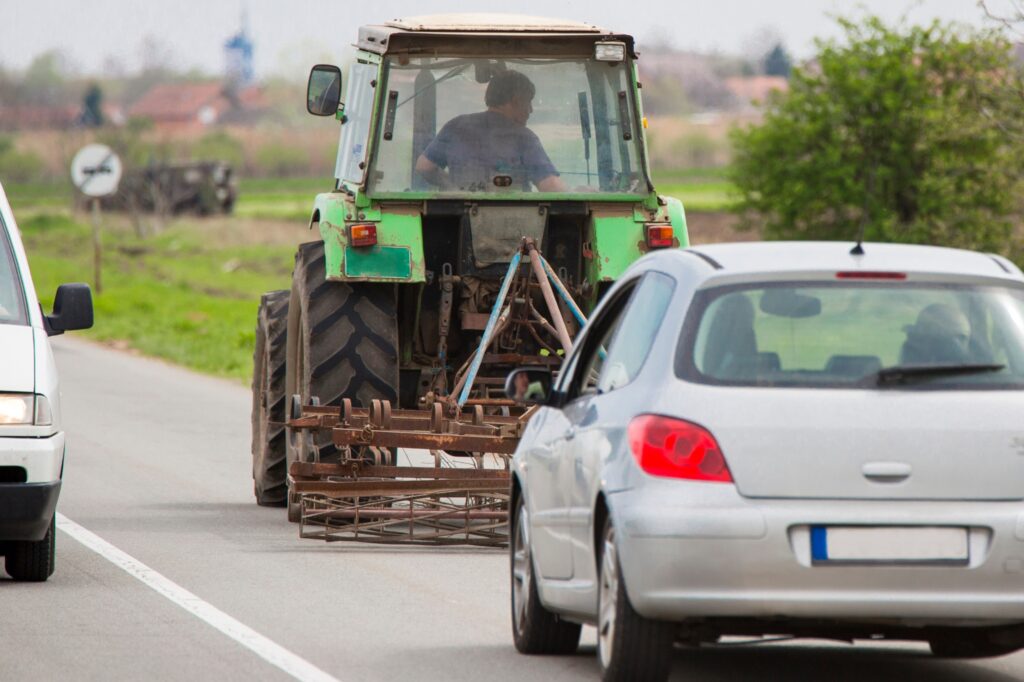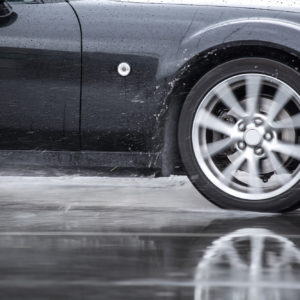There are a lot of risks involved in driving near farm vehicles, especially for inexperienced drivers. For one, these vehicles are relatively larger than cars on the road. It’s one of the reasons why sharing the road and being cautious and patient is crucial for safely driving near farm vehicles.
Dangers of Driving Near Farm Vehicles
Some dangers of driving near farm vehicles include slow speed, wide turns, overhanging equipment, and limited visibility. Driving near them could result in accidents, making it crucial to follow proper driving etiquette when near farm vehicles.
Slow Speeds
Farm vehicles are significantly slower than other types of automobiles, which can lead to impatience for inexperienced drivers. The first thought would be to overtake, but the sheer size of farm vehicles makes it difficult to see oncoming traffic, which may lead to accidents.
Similarly, a slow-moving farm vehicle makes it difficult to judge closing speed, resulting in rear-end collisions. This is because most drivers are used to automobiles driving at the same speed as them.
For example, if you’re driving 55 mph and a tractor is moving 15 mph in front, it only takes five seconds to close a gap the length of a football field.
Wide Turns and Overhanging Equipment
Left-turn collisions occur when the driver isn’t aware of how farm vehicles move and how big they are. Take tractors, for example. These vehicles may swing to the right before making a left turn because they need room to line up with a farm gate or driveway. They may also need a bigger radius due to overhanging equipment.
All these factors make it hard to judge how much space a farm vehicle needs to turn. In addition, motorists may take this chance and overtake, possibly resulting in accidents since the tractor driver may not see the overtaking motorists due to limited visibility.
Limited Visibility and Poor Lighting
As mentioned, farm vehicles are relatively larger than automobiles, limiting the visibility of the oncoming traffic and road hazards, making it harder to drive around them because you won’t see if an automobile is coming on the other side of the road.
Similarly, farm vehicles may be harder to spot during low visibility conditions like nighttime. While they need headlights, tail lights, flashers, reflectors, and more on public roads, some tractors may not have them installed if they don’t frequently traverse these roads.
As a result, these slow-moving vehicles are harder to spot at night, which could result in rear-end collisions if you’re driving fast.
In addition, wide equipment is more dangerous at night if you’re on the opposite side of the farm vehicle. This is because it’s harder to spot the equipment extending across the centerline and into the opposite lane.
Debris and Road Condition
Tractors that just finished working on the farm and are on public roads may leave mud and other road debris. While they’re relatively minor compared to the dangers above, mud could be slippery enough that you lose control when driving over.
Safely Driving Around Farm Vehicles

Be cautious when driving around farm vehicles due to the dangers it poses. Slow down, watch out for hand signals, yield, and avoid tailgating. Giving farm vehicle drivers space and time ensures your safety on the road.
Slow Down
Look for a retroreflective triangle with the point side up on the back of a farm vehicle. The sign indicates the vehicle is slow-moving, so you should match its speed. If you spot the tractor, keep a safe distance of around 50 feet since the driver may not spot you up close.
Watch for Hand Signals
Besides the slow-moving vehicle sign, you should look for hand signals. This is the driver’s way of communicating with you if they don’t have turn signals to work with. You may notice the driver waving to you to pass them or giving you a halt signal when turning. Truck drivers have a better vantage point than you, so it’s crucial to trust their signals.
Yield
Always yield and give the right of way to farm vehicles on the opposite side of the road. Some of these trucks can’t pull over to the shoulder safely due to their weight and equipment. If you’re sharing a narrow road, give them enough space to safely pass you by driving onto the shoulder.
Always err on the side of caution since farm trucks may have equipment that could hit your vehicle if you don’t give space.
Don’t Tailgate/Give Space
The most important thing to remember when driving around farm vehicles is to avoid tailgating. Give them enough space, no matter which side of the road you’re driving on. Whether you’re behind or on the opposite road, provide space to let them move properly. Doing so limits danger for you and the truck driver.
Any information provided on this Website is for informational purposes only and is not intended to replace consultation with a professional mechanic. The accuracy and timeliness of the information may change from the time of publication.




















